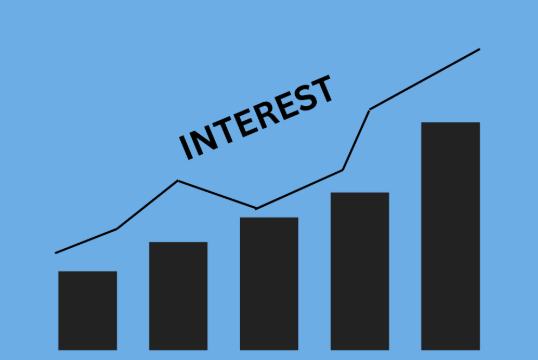In 2025, Canadian homebuyers face a housing market shaped significantly by interest rate fluctuations. Whether you’re a first-time buyer or looking to upgrade your property, understanding how changes in interest rates affect your purchasing power, mortgage costs, and overall affordability is essential. This blog explores the current interest rate environment in Canada, its effects on buyers, and strategies to navigate the shifting landscape.
What Are Interest Rates and Why Do They Matter?
Interest rates refer to the cost of borrowing money, typically expressed as a percentage. For homebuyers, the key interest rate is the mortgage rate, which determines how much you’ll pay in interest over the life of your home loan.
The Bank of Canada influences these rates by setting the overnight rate, which affects lenders’ costs and ultimately mortgage rates. When the Bank raises rates, borrowing becomes more expensive; when it lowers rates, borrowing costs decrease.
Interest rates directly impact:
- Monthly mortgage payments
- Total cost of purchasing a home
- Home affordability
- Housing market demand and prices
The Interest Rate Landscape in Canada for 2025
Over the past few years, Canada experienced a period of rising interest rates as the Bank of Canada responded to inflationary pressures. After several hikes, rates have started to stabilize, but the possibility of further changes remains as the economy adjusts.
For homebuyers in 2025, the key takeaways are:
- Fixed mortgage rates are higher than the ultra-low levels seen during the pandemic.
- Variable rates fluctuate based on market conditions and Bank of Canada policies.
- Buyers need to carefully consider which mortgage type suits their risk tolerance and budget.
How Rising Interest Rates Affect Canadian Homebuyers
- Increased Monthly Mortgage Payments
Even a small increase in interest rates can significantly raise monthly mortgage costs. For example, on a $500,000 mortgage, a 1% rate hike can add hundreds of dollars to monthly payments, impacting household budgets.
- Reduced Borrowing Power
Higher rates mean lenders qualify buyers for smaller loan amounts. This reduction can limit the price range of homes a buyer can afford, pushing some out of competitive markets.
- Cooling Housing Demand
As borrowing becomes more expensive, demand often slows. This cooling effect can lead to more balanced markets or even price corrections in overheated regions.
What This Means for First-Time Homebuyers
First-time buyers are often the most sensitive to interest rate changes. Many rely heavily on financing, so rising rates can delay their entry into the market or reduce the size of their first home.
However, some benefits include:
- Less competition from investors or buyers stretching their budgets too thin.
- Opportunities to negotiate better deals as demand softens.
- Encouragement to save for larger down payments, improving financial stability.
Fixed vs. Variable Rate Mortgages: What Should Buyers Choose?
Choosing between fixed and variable rates is a critical decision:
- Fixed-rate mortgages offer payment stability, protecting buyers from future rate hikes. This predictability appeals to those who prefer budgeting certainty.
- Variable-rate mortgages often start lower but can increase if rates rise, posing risks but potentially saving money if rates stay stable or drop.
In 2025, financial advisors recommend carefully weighing your risk tolerance, financial situation, and market outlook before deciding.
Tips for Homebuyers Navigating Rate Changes
- Get Pre-Approved Early
Pre-approval locks in your qualifying mortgage amount based on current rates, giving you a clear budget.
- Factor in Rate Increases
Plan your finances assuming rates might rise. This cushion prevents surprises after buying.
- Consider Longer-Term Fixed Rates
Locking in a fixed rate for 5 years or more can shield you from volatility.
- Increase Your Down Payment
A larger down payment reduces the loan size and the interest paid over time.
Broader Market Effects of Interest Rate Changes
Beyond individual buyers, interest rate shifts influence:
- Housing Prices: Higher rates can slow price growth or cause declines in overheated markets.
- Rental Market: As buying slows, demand for rentals may increase, affecting rental prices and availability. For a detailed look at how broader economic forces like inflation and policy changes are reshaping Canada’s rental market, you can check out our insights on how inflation and policy changes are shaping the rental market in Canada.
- Real Estate Investment: Investors may become cautious, impacting rental property supply.
Conclusion: Preparing for the 2025 Housing Market
Interest rate changes are a key factor shaping the Canadian housing market in 2025. Buyers who stay informed, plan ahead, and adapt to changing conditions will be best positioned to make sound purchasing decisions.
Managing a mortgage in a changing rate environment requires smart budgeting. For practical advice on how to live well without breaking the bank, including tips that help balance lifestyle with financial goals, explore our budget-friendly lifestyle tips.
Whether you are navigating your first home purchase or upgrading your property, understanding how interest rates affect affordability and mortgage costs can empower you to act with confidence.
If you want to stay ahead of the real estate curve, following these trends and strategies will help you navigate 2025’s unique market challenges successfully.










